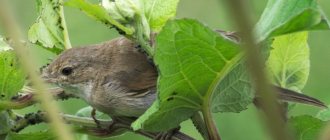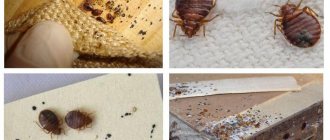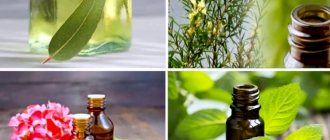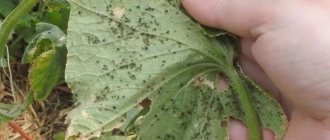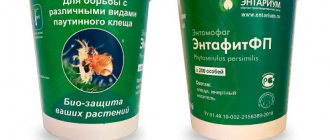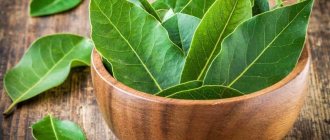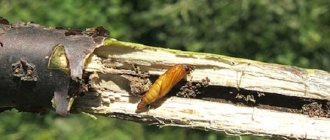What kind of pest is this
The melon, or cotton, aphid belongs to the class of insects, the family True aphids.
This type of aphid infects more than 330 plant species: cucumbers, watermelons and melons, pumpkin, cotton, tobacco and others.
In weather conditions in the middle zone, it becomes active in the first half of July. In greenhouses, cucumbers can be attacked by the pest as early as mid-May.
The parasite is widespread everywhere.
What does it look like
The size of the insect is 3-4 mm. The body of the melon aphid is elongated, pointed towards the rear tip. The body is colored in different shades of green, the legs and antennae are dark brown or black. There are winged and wingless individuals.
The oral apparatus is of a sucking type, equipped with a proboscis, with the help of which the insect pierces the plant tissue and sucks out the cell sap.
Our photos will help you identify the pest.
How does it reproduce
In the spring, the colony begins with larvae. They hatch from eggs laid on weeds in the fall at an air temperature of +5ºC. The larvae are able to overwinter under the leaves of winter-green plants, for example, in greenhouses.
After molting, the larvae transform into wingless females and begin asexual reproduction.
As the colony becomes denser, winged individuals appear, which fly and are carried by the wind to neighboring plants, where they form new colonies.
During the summer, dozens of generations of females are born, the offspring from one larva reaching tens of thousands of individuals.
In autumn, winged males emerge and fertilize females, who again lay eggs. It is these offspring that are able to survive the winter and begin the next life cycle.
How to recognize damage to cucumbers by melon aphids
On cucumbers affected by aphids, the leaves droop, curl, and fade. Flowers and ovaries fall off.
On the back of the leaves, small insects and a shiny thin film of sugary waste products of aphids are visible. As the colony grows, insects settle on stems, buds and young shoots.
Damage caused
Parasites pierce cucumber leaves with their proboscis and feed on their juice. The leaf blade wrinkles and dries out. The processes of photosynthesis and the formation of nutrients are inhibited. Fruit growth and formation slow down.
If uncontrolled reproduction, an aphid colony can lead to the death of the plant and complete loss of the harvest.
In addition, aphids transmit viral diseases, so the pest invasion is often accompanied by outbreaks of cucumber mosaic.
Description of the insect
The melon aphid is also called the cotton aphid. In Latin, its name sounds like Aphis gossypii. The insect belongs to the family True aphids. The color of melon aphids can be varied: yellow or green in various shades. The body of the pest is oval, elongated, reaches a length of 1.2 mm to 2 mm, and visually resembles a colored grain of rice.
The melon aphid lives in the following regions:
- Europe;
- Far East;
- Siberia;
- Asia;
- Transcaucasia;
- North Africa;
- North America, Hawaii.
Wherever the melon aphid appears, agricultural crops begin to suffer, so people everywhere are fighting the pest.
Life of melon aphids
Melon aphid larvae and female “wingless virgins” wait out the winter, hiding between the leaves of weeds or under the basal leaves of greenhouse weeds. In spring, when the cold weather recedes and the air temperature warms up to 5 °C, they become more active. If thaw and frost follow each other, many aphids die, because such changes are fatal to them.
The melon aphid does not require males to reproduce.
Individuals of melon aphids gather together to form colonies. Usually, if the plants are not treated, they grow to large sizes. The colony is most often located on the underside of the leaf blade, less often it captures the stem, buds and flowers, and fruits.
Aphids secrete honeydew, which the ants feed on. Therefore, the latter certainly accompany the colonies, protecting the suppliers of sweet food from predatory insects. Surprisingly, sometimes ants take aphids to their anthill for the winter, and with the onset of the spring months they again move their “donors” to green plants.
How to fight
It is not difficult to destroy aphids; the insect is susceptible to the action of various drugs.
There are two rules for a successful fight:
- Simultaneously with the destruction of the parasite, take measures to eliminate the ants.
- Treatment with any means should be carried out not only from the top, but also from the bottom side of the sheet.
Chemicals
Insecticides have a powerful effect against aphids:
- "Metaphos" is a contact action drug. The active ingredient is parathion-methyl. Available in the form of an emulsion in ampoules of 5 ml. To prepare the working solution, the contents of 2 ampoules (10 ml) are diluted in 10 liters of water. Treatment is carried out in the early morning or evening. The last spraying is no earlier than 30 days before harvesting the fruits.
- "Decis Lux" is an emulsion of contact-intestinal poison based on deltamethrin. Packaged in ampoules or bottles of various sizes. To treat cucumbers, 5 ml of the drug is dissolved in 20 liters of water. Cucumbers are sprayed when the first specimens appear, and when they appear again - after 2 weeks. The waiting period before harvesting is 20 days.
- "Inta-Vir" is a chemical of contact-intestinal action. The main substance is cypermethrin. It is produced in the form of tablets weighing 8 g. To combat aphids, dilute 1 tablet in 10 liters of water. Processed during the growing season at least 20 days before harvesting cucumbers.
Important! When working with chemicals, you need to wear closed clothing, a hat, gloves and a respirator. After work, be sure to wash your hands and face with soap and wash your clothes.
Biological products
Biological products are less toxic to humans and beneficial insects. They have a delayed effect; the death of parasites occurs 1-3 days after treatment.
Among such products, “Fitoverm” and “Aktofit” are popular among vegetable growers, which have a nerve-paralytic effect on pests.
| A drug | Active substance | Preparation of working solution | Frequency of treatments | Consumption rate | Waiting period |
| "Fitoverm" | 5% aqueous emulsion of aversectin C | 2 ml per 1 liter of water | 1-2 with an interval of 2-3 weeks | 100 ml per 1m² | 1-3 days |
| "Aktofit" | 0.2% alcohol solution of aversectin C | 8 ml per 1 liter of water | 1-2 with an interval of 2-3 weeks | Until the sheet is completely wetted. When drops of liquid drain, transfer the stream to another surface to be treated. | 2 days |
Reference. The standards for preparation and consumption of solutions are given for the control of aphids on cucumbers. When using drugs on other crops or against other pests, you should carefully read the instructions.
Folk remedies
Budgetary folk remedies against melon aphids on cucumbers are good as a preventive measure and in the initial stages of infection. The most common recipes:
- Shag or tobacco. Pour 300 g of dry shag (tobacco) into 10 liters of water, leave for 2 days, strain before use and add 70 g of grated tar soap.
- Vinegar. 7 tbsp. l. Dissolve 9% vinegar in a bucket of water.
- Hot pepper. Grind 50 g of red hot pepper pods, pour in a liter of boiling water and leave for 2 hours, strain and dilute with 10 liters of water.
- Celandine. Pour 200-300 g of dry herb into a bucket of water and leave for a day, strain before use.
- Garlic. Chop 500 g of garlic, add 3 liters of water and leave in a dark place for 5 days. To prepare the working solution, take 50 ml of infusion per 10 liters of water.
- Ash and laundry soap. 50 g of wood ash and 70 g of grated laundry soap are mixed with 10 liters of water.
Vegetables are sprayed with one of the listed products until the pest completely disappears at intervals of 7 days. The optimal consumption is 1 liter per 10 m2.
Plants that repel pests
To create a natural barrier against aphids, fragrant plants are planted next to the cucumber beds: garlic, marigolds, cilantro, fennel, basil, thyme, peppermint.
Melon aphid on zucchini
Melon aphid on zucchini
Zucchini is less susceptible to aphids than watermelons, but they also suffer from its invasion. The melon aphid on zucchini is located mainly on the lower tier of leaves. When affected by the disease at the flowering stage, the stalks die. With later infection, the fruits suffer, they shrink and dry out.
Methods for killing aphids on zucchini
If the zucchini is infested with melon aphids, control measures should be taken without delay. You can start with more gentle methods. Pollinate the bushes twice a day with sulfur powder or water with a soap solution. You need to take 100 grams of soap per bucket of water. In case of mass destruction, special drugs will be required. Intravir, Iskra and 10% Karbofos have a good effect. It is prohibited for both people and animals to eat vegetables after processing for the time specified in the instructions.
Preventive measures
The risk of aphids is significantly reduced with proper care of vegetables, so it is important to follow the watering and fertilizing regime.
The following measures have a preventive effect:
- Ant population control. To combat ants, the drugs “Absolut”, “Aardeater”, “Grom-2” and others are used.
- Disinfection of soil and greenhouse structures with bleach (400 g per 10 liters of water) before planting vegetables.
- Thorough removal of all plant debris from the beds. Aphid larvae can survive on weeds and tops remains.
- Compliance with planting schemes: no more than 4 cucumber bushes are planted per 1 m2. Density promotes the rapid spread of pests.
- Regular inspection of plants. Weekly inspection of leaves allows you to detect pests earlier and begin timely control.
Signs of damage and why aphids are dangerous
Most often, aphids settle on the underside of leaves, so detecting them at the very beginning of infection can be quite problematic. There are signs that will help you suspect the appearance of these harmful insects in the garden:
- the appearance of sticky drops on the above-ground parts of the plant;
- loss of turgor in young leaves;
- change in the shape of the leaf plate, its curling and withering;
- falling of flowers and ovaries;
- the appearance of a large number of ants on cucumber plantings.
Attention! Late detection of an aphid colony on a crop leads to crop loss. By drinking the plant juice, the insect causes the stems and leaves to dry out, as well as the ovaries to fall off.
Tips and tricks
Experienced vegetable growers recommend planting varieties and hybrids with complex disease resistance. They are distinguished by a strong root system, powerful vegetation and recover faster from pest attacks. It is worth paying attention to the hybrids Murashka F1, Boy with Thumb F1, Masha F1, Pasadena F1.
To combat the parasite, it is useful to attract birds and insects that eat aphids to the site. To attract sparrows, tits, and linnets, feeders are hung around the garden plot.
Planting dill and mustard next to cucumber beds will attract ladybugs - natural enemies of aphids.
Prevention of the appearance of the parasite
You will have to fight aphids throughout the summer season, since this pest easily migrates from one crop to another. To ensure that your efforts in growing cucumbers are not in vain, the following preventive measures should be taken:
- Regularly and promptly remove fallen leaves and plant debris . This manipulation will make it impossible for insects to overwinter on your site.
- Treatment of the greenhouse before planting . The room is treated with a solution of caustic soda, bleach or copper sulfate.
- Correct watering and fertilizing regime. Weakened plants are not able to resist pest invasion.
- Periodically spray the crop with plant infusions . Among such plants, onions, potatoes, wormwood, tomatoes, and celandine repel aphids.
- Treat the bushes with an infusion of plant ash and liquid soap . This solution will not allow the pest to gain a foothold on various parts of the plant.
- Control of planting density . Lack of ventilation provokes pest damage to the plantings. There should be a distance of about 70 cm between the seedlings to allow fresh air to flow.
- Regularly inspect foliage and young shoots . Timely identification of the parasite will allow an earlier start to combat it.
The appearance of aphids on cucumber plantings is, of course, an unpleasant phenomenon. But you shouldn’t panic: a quick reaction and perseverance will help get rid of the annoying pest.
How long does it take to get rid of aphids?
Not having time to rejoice at the first leaf, the presence of aphids upsets you. If you want to do without chemicals, then a proven method is laundry soap. Three hours is enough to kill aphids.
Pests can be controlled in different ways. It all depends on the drug you are using:
- insecticides can kill aphids in the first two hours after spraying
- biological products last longer, and the aphids die after 12 days. Some drugs in this category, for example: Fitoverm will act after 5 days, Actofit after 2 days.
Tip #2. It is important to know that chemical preparations are prohibited from being used during the fruiting period.
How to recognize cotton aphids
The wingless female aphid has a pear-shaped body, 1-2.1 mm in length and 0.9-1.5 in width.
The body color is matte and varies from yellow-green to dark green, almost black. The head and chest are darker, but some individuals have no differences in the color of these parts of the body. There are no antennal tubercles on the head, the forehead is slightly convex. The antennae are yellow, consist of 6 segments, reaching 75% of the body length. The spine of the last antennal segment has three apical setae. The length of the Spitz is equal to the third segment of the antenna. The eyes are brown-brown in color. Marginal tubercles are located on abdominal segments 1 and 6. The legs are usually yellow, and the tops of the femurs, tibiae and tarsi are black. The base of the proboscis is light, the last two segments are dark. The juice tubes are slightly widened at the base, cylindrical in shape, black in color, 2 times longer than the tail and make up about 20% of the body length. The finger-shaped tail has an interception at the base and three pairs of lateral hairs. The color of the tail is usually the same as the body. Spiracles are oval. The winged female has an elongated body. The color of the head, chest, juice tubes, ends of the legs and paws is black. The coxae of all legs and the apices of the hind femurs are black-brown. The abdomen is yellow-green, darker at the apex, and has rectangular dark brown spots on the sides. There are dark stripes on the dorsal side of the abdomen. The antennae are longer, compared to the wingless specimen. The forehead between the antennae is triangular in shape. Eye color is brown-burgundy. Two ocelli are adjacent to the compound eyes from above, and the third is located between the antennae on the forehead. The location of the rhinaria on the third segment may differ on the right and left antennae. The number of rhinaria of the third segment varies from 5 to 12. On the 6th antennal segment there is one main and five additional rhinaria. The tail is brown, finger-shaped with three pairs of lateral hairs, slightly extending beyond the sap tubes.
Winged cotton aphid
Symptoms of watermelon infestation by aphids
The presence of aphids on watermelon leaves can be detected with the naked eye. Just look closely and see the following signs:
- Watermelon leaves curl
- Plant stems become thinner
- Ovaries and flowers fade and fall off
- There is a white sugar coating on the back of the sheet
Look closely at the back of the watermelon leaf regularly.
This will help avoid a massive invasion of aphids throughout the entire plantation. Your task is to notice the first colonies of aphids in time, which you can get rid of by washing them off with water. If you skip the initial stage of the appearance of aphids, then soon all the plants in the melon will be affected.
Prevention and control measures
For preventive purposes, around greenhouses it is necessary to destroy weeds on which aphids overwinter and reproduce.
Biological control measures
The pest has many natural predators that can control it. In closed ground conditions, such entomophages are used as: Aphidius colemani, Common lacewing ( Chrysoperla carnea
), Ladybug (Adalia bipunctata). Pest colonies have a spatial structure in which sexually mature females are in their center, larvae of different ages are around them, and old females of post-reproductive age are at the periphery. Polyphagous predators attacking a colony primarily destroy old individuals that are not capable of reproduction, while aphid parasites specialize in larval stages and females of generative age.



